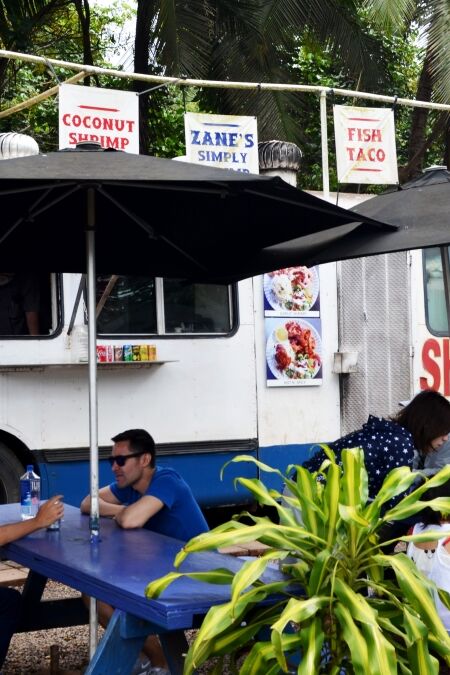Kauaʻi, Hawaii, is home to many breathtaking natural wonders, but none quite capture the imagination like the Sleeping Giant, also known as Nounou Mountain. This iconic ridge, nestled on the east side of the island between Wailua and Kapaʻa, gets its name from its unique silhouette that resembles a giant resting on its back. In this guide, we’ll delve into the mountain’s rich history, explore its legendary trails, and provide essential tips to help you plan your adventure.
Highlights
- The summit of Sleeping Giant offers breathtaking panoramic views of Kauaʻi, including the Wailua River, Mount Waialeale, and the eastern coastline.
- With two main trails (East and West), both approximately 2-3 miles long, hikers can choose their preferred route based on difficulty and scenery. The East Trail is known for its steep ascent and rewarding vistas, while the West Trail features a picturesque Cook Pine tree tunnel.
- At the summit, there is a picnic shelter where visitors can relax and enjoy a meal surrounded by stunning views. It’s a perfect spot to unwind after the hike.
- The summit is renowned for its spectacular sunrise views. Early risers can experience the beauty of Kauaʻi awakening, making it a popular choice for those looking to start their day with an unforgettable sight.
- Visiting Sleeping Giant is free of charge, making it an economical choice for travelers looking to explore the natural beauty of Kauaʻi without breaking the bank.
History
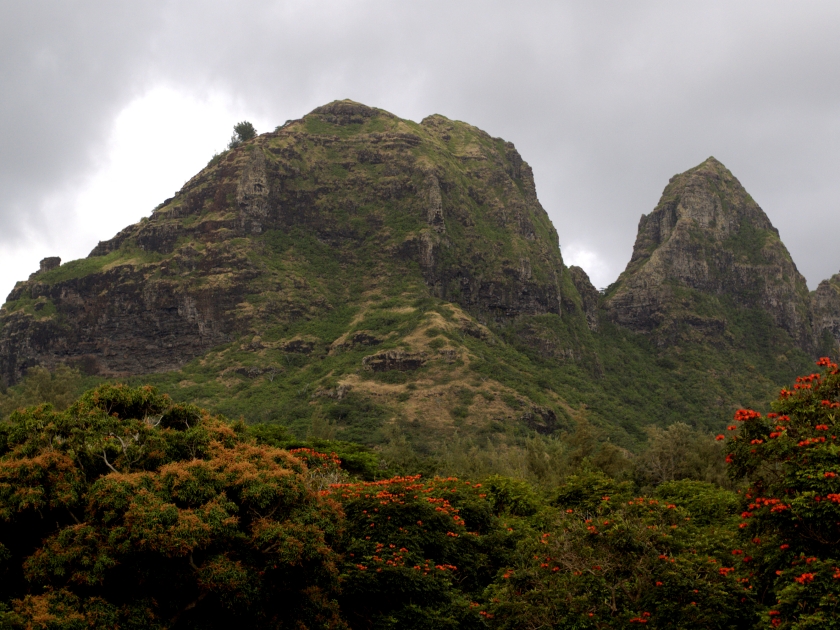
Legends of the Sleeping Giant
One popular tale recounts the story of Puni, a giant who overindulged at a celebratory feast and fell into an eternal slumber. Another version tells of a magical fish that, after being fed by villagers, transformed into a giant and fell asleep, never to awaken. These legends reflect themes of hospitality, excess, and the enduring power of storytelling in Hawaiian culture.
Historical and Cultural Significance
Nounou Mountain has served as a guardian of Kauaʻi’s eastern shore, playing a central role in the lives of ancient Hawaiians. Its prominence in the landscape, along with the legends tied to it, solidifies its status as a symbol of Kauaʻi’s cultural and natural history. The surrounding Nounou Forest Reserve, rich in biodiversity, enhances its historical importance as a vital part of the local environment.
A Modern Hiking Haven
Today, the Sleeping Giant is celebrated as one of Kauaʻi’s top hiking destinations. The well-maintained trails that ascend its slopes offer sweeping views of the Wailua River, lush forests, and the Pacific Ocean, drawing adventure-seekers and cultural enthusiasts alike to experience the mountain’s beauty and legendary charm.
Hiking Trails Overview
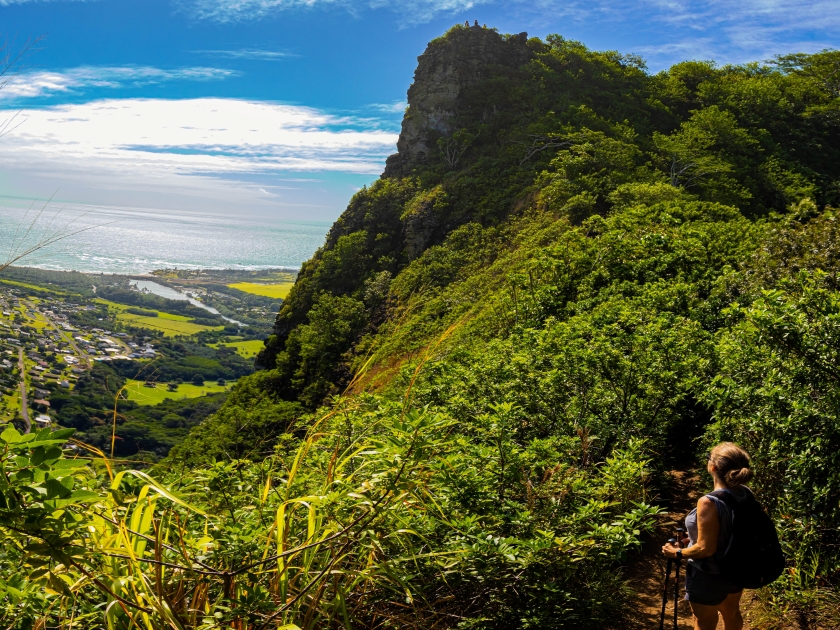
Trail Options
East Nounou Trail
- Distance: 2 miles (3.2 km) to the summit
- Elevation Gain: 1,000 feet (305 meters)
- Difficulty: Moderate
- Highlights: This well-maintained trail features switchbacks winding through a lush forest of ironwood and guava trees. At the summit, hikers are rewarded with sweeping views of the Wailua River and the Pacific Ocean.
West Nounou Trail
- Distance: 2.2 miles (3.5 km)
- Elevation Gain: 760 feet (232 meters)
- Difficulty: Moderate
- Highlights: This trail begins with a scenic tunnel of Cook Pine trees, providing a picturesque start to the hike. Known for its tranquil atmosphere and less crowded paths, it’s a great choice for those seeking a peaceful journey with equally stunning vistas.
Trailhead Access
- East Nounou Trailhead: Located on Hale‘īlio Road in Wailua, with a small parking area nearby.
- West Nounou Trailhead: Accessible from multiple points, including Lokelani Road, Crossley Road, and Kamalu Road, offering a variety of parking options and a quieter start to your hike.
What to Expect on Your Hike
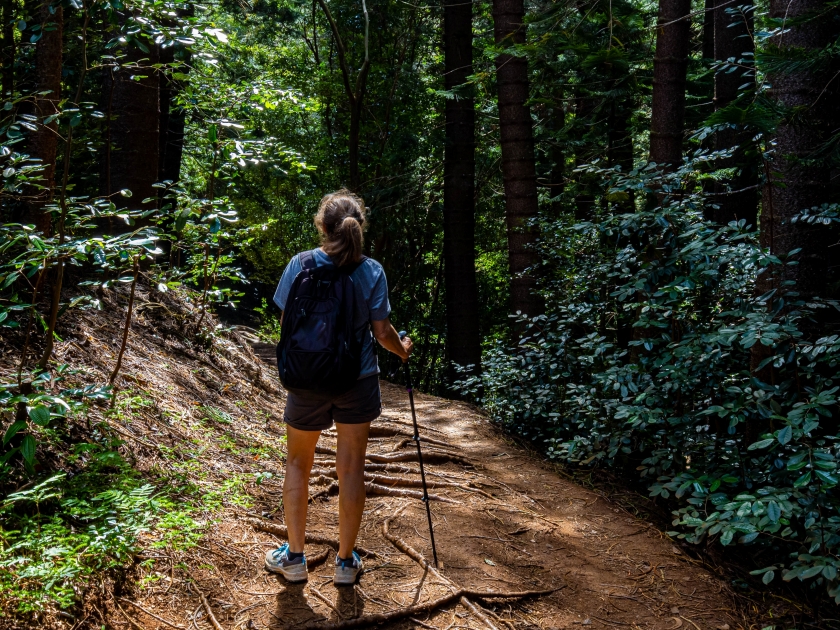
Terrain and Conditions
Both trails to the Sleeping Giant summit traverse rugged terrain, featuring steep inclines, narrow ridges, and occasional rocky sections. Weather conditions can vary, and rain often leaves the paths muddy and slippery, making sturdy footwear and cautious steps essential. Hikers should also be prepared for tropical heat or sudden rain showers, common in Kauaʻi’s climate.
Scenic Views
Reaching the summit of Sleeping Giant rewards hikers with breathtaking panoramic views of Kauaʻi. To the east, the vast Pacific Ocean stretches endlessly, while inland, the verdant valleys and towering Mount Waialeale—renowned as one of the wettest places on Earth—create a dramatic and awe-inspiring backdrop.
Amenities
There are no restroom facilities along the trails, so visitors should plan accordingly before starting their hike. At the summit, a charming picnic shelter offers the perfect spot to enjoy a meal while taking in the surrounding natural beauty, making your journey even more memorable.
Tips for Visiting
- Wear sturdy hiking shoes to handle rugged and potentially muddy terrain.
- Start early in the morning to avoid midday heat and enjoy fewer crowds.
- Check weather conditions before hiking; trails can become slippery after rain.
- Bring plenty of water, snacks, sunscreen, and insect repellent.
- Stay on marked trails to preserve the environment and ensure safety.
- Pack out all trash to maintain the natural beauty of the area.
- Use the picnic shelter at the summit for a scenic meal or rest break.
- Plan restroom visits, as there are no facilities along the trails.
- Keep an eye on children and pets, especially on narrow ridges.
- Capture the stunning views but prioritize your footing on uneven paths.
Best Times to Visit
The best times to visit Sleeping Giant are early in the morning or late in the afternoon, when temperatures are cooler, and the trails are less crowded. These times also offer softer lighting, perfect for capturing stunning photos of Kauaʻi’s lush landscapes and coastal views. Avoid hiking during or immediately after heavy rain, as the trails can become slippery and challenging to navigate. For the most enjoyable experience, plan your visit during Kauaʻi’s drier months, typically from April to October, while still being prepared for occasional rain showers.
Nearby Attractions
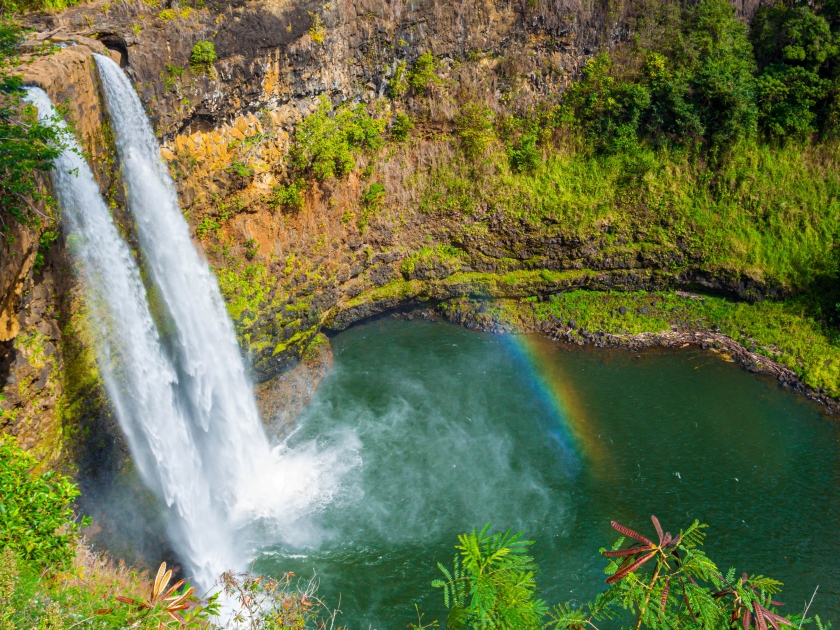
After your hike on Sleeping Giant, explore the natural beauty and cultural sites surrounding the area. Paddleboarding or kayaking along the serene Wailua River offers a unique perspective of Kauaʻi’s lush landscapes. Nearby, the stunning Opaekaa Falls and Wailua Falls are must-see attractions, perfect for photo opportunities. For a cultural experience, visit the Wailua Complex of Heiaus, a collection of sacred Hawaiian sites steeped in history. If you’re looking to unwind, head to Lydgate Beach Park, a family-friendly spot ideal for swimming, picnicking, or simply relaxing by the ocean.
Frequently Asked Questions (FAQs)
The hike typically takes about 2 to 3 hours to complete, depending on your pace and which trail you choose.
Yes, the Sleeping Giant trails are considered moderate, making them suitable for older kids and beginners with some hiking experience.
Yes, there are several guided hiking tours offered in the area that provide insights into the local flora, fauna, and legends of the Sleeping Giant.
Dogs are allowed on the Sleeping Giant trails but must be kept on a leash at all times. This policy ensures that both the dogs and the local wildlife remain safe during visits to this popular hiking destination.
Hikers should bring water, snacks, sunscreen, and possibly a light jacket for changing weather conditions while enjoying the hike.
No, there are no restroom facilities along the trails, so it’s advisable to plan accordingly before starting your hike.
How to Get There
By Car
To reach Sleeping Giant by car, start by heading toward the designated access points in the region. If you’re using a GPS, enter “Sleeping Giant Provincial Park” as your destination. The park is well-signposted, with ample parking available near trailheads. Ensure you’re prepared with a full tank of gas and any entry passes required for access to the area.
By Bus
For those traveling by bus, begin by consulting the local transit schedules, as routes and connections can vary depending on your location. Most regional buses heading toward the park or its vicinity will drop you off at nearby stops. From there, you may need a short taxi ride or a brief walk to reach the entrance. Be sure to plan your return trip to match bus timetables.
Awaken the Giant Within
Hiking the Sleeping Giant is a trek through Kauaʻi’s lush landscapes and a chance to stand atop one of the island’s most iconic natural wonders. From the thrill of winding trails to the serenity of panoramic views at the summit, this adventure promises memories as grand as the giant himself. Ready to awaken your inner explorer? Plan your trip, embrace the climb, and don’t forget to share your stunning photos and stories—let’s keep the legend of the Sleeping Giant alive!



